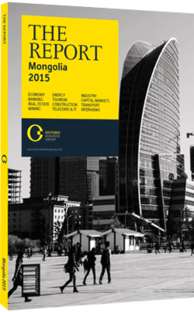Graeme Knowd, Associate Managing Director Asia, Corporate & Financial Institutions, Moody’s Investors Service: Interview

Interview: Graeme Knowd
What do you see as the major external challenges currently facing the Mongolian economy?
GRAEME KNOWD: The risks facing Mongolia in 2015 resemble those that concern countries around the world. First, there is a pressing need to determine the true extent of the Chinese economic slowdown, and to gauge whether China can effectively rebalance its economy away from investment towards consumption. Second, it is important to manage the impact of an appreciating US dollar. To some extent these concerns are amplified in Mongolia given the implications such a slowdown would have for commodity prices and the country’s reliance on China as the primary market for the majority of its exports, not just coal and copper. People are also worried about the dollar, since the country’s banking sector is heavily reliant on external fundraising and there is a mismatch among some banking clients in terms of borrowing in dollars but keeping revenues in local currency. Unfortunately, domestic banks and their clients do not have effective instruments for hedging currency risk such as forex forwards and options. There is also a fair amount of government sector dollar borrowing to be repaid in the coming years.
It must be emphasised, however, that China is still experiencing growth rates that remain the envy of the vast majority of the world. The real risk posed to Mongolia is not so much one of single-digit growth rates, as compared to the double-digit growth that was experienced over the past decade. The real risk is that of a hard landing that could lead to zero or even negative growth. After all, if China can successfully move its economy away from investment to consumption while maintaining growth, urbanisation should continue apace. This as much as anything else has driven the need for commodities, including heavy industrial production. This is illustrated by the example of copper, which is used for electric wiring in building construction. Therefore, if China continues to grow, so will Mongolia.
To what extent has the government’s adoption of pro-cyclical policies managed to mitigate any decrease in foreign direct investment (FDI)?
KNOWD: The government’s policies, especially those implemented by the Bank of Mongolia, have done a reasonably good job at mitigating the effects of a rapid slowdown in FDI and preventing a hard landing. We still have some concerns with respect to the relatively sluggish growth that the country has undergone over the past year. Indeed, the outlook for both the sovereign and banking system ratings remain negative. But Mongolia has so far avoided the negative growth that it experienced in 2009 and the resultant banking crisis when non-performing loans reached double-digit levels. That said, we are currently seeing a gradual deterioration in asset quality, especially among small and medium-sized enterprises, as well as companies further down the supply chain. Moreover, there remain important questions as to whether these numbers will continue to rise. All things considered, we believe that the banking system can sustain non-performing loans of between 5% and 7%, which is considerably higher than the numbers we are currently seeing. The real questions for the coming year, therefore, are whether the authorities, both monetary and fiscal, can keep any further slowdown under control to maintain a stable rate of growth. Another pressing question, of course, is whether FDI will pick up again.
Although I have primarily spoken of risks, there are various bright spots. For example, there appear to be some positive moves afoot to consolidate off-balance sheet items, such as spending by the Development Bank of Mongolia, onto the government balance sheet in line with IMF best practices. Indeed, the state of affairs in Mongolia has turned around dramatically of late, with the country’s balance of payments stabilising and even improving slightly, swap lines with the People’s Bank of China going into effect, and forex reserves gradually rebuilding.
You have reached the limit of premium articles you can view for free.
Choose from the options below to purchase print or digital editions of our Reports. You can also purchase a website subscription giving you unlimited access to all of our Reports online for 12 months.
If you have already purchased this Report or have a website subscription, please login to continue.

